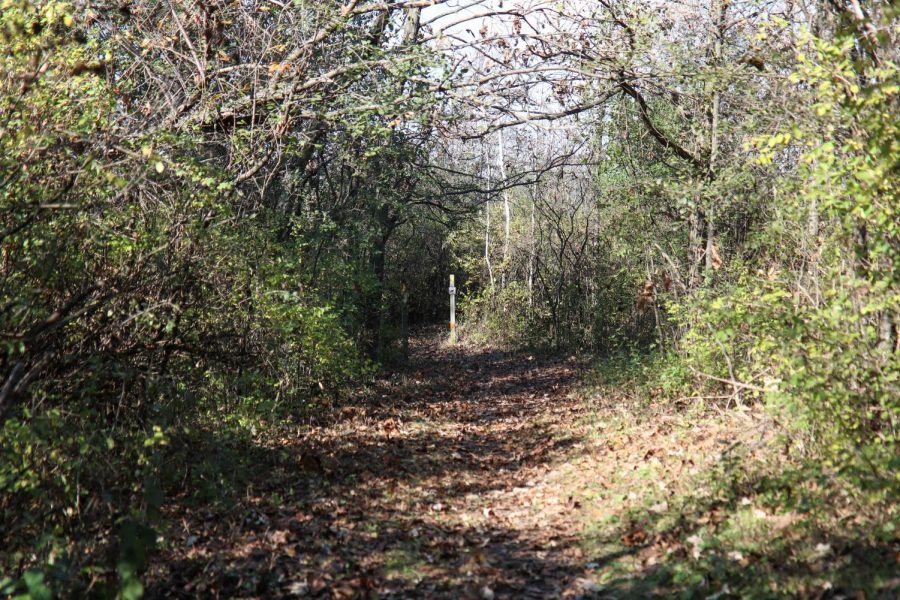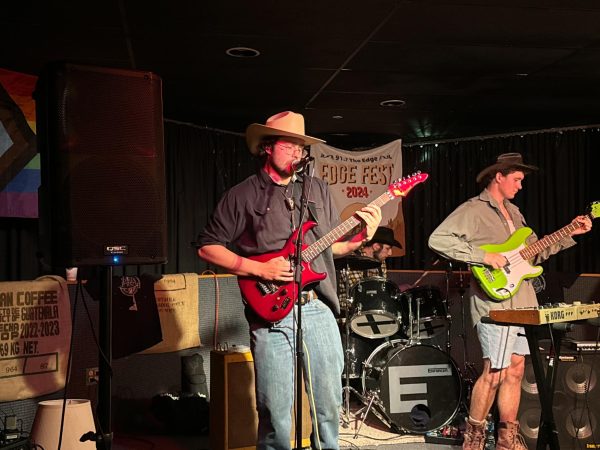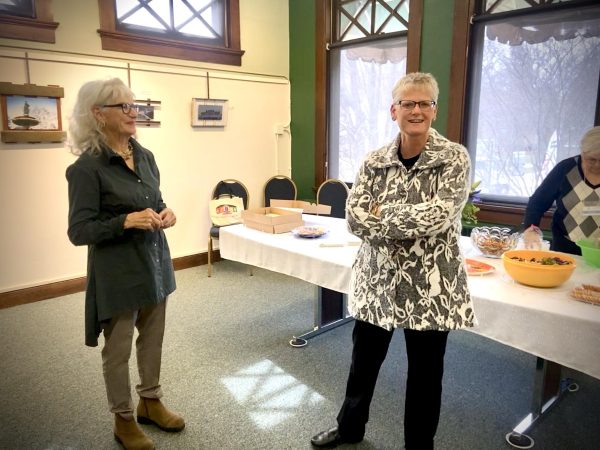Communities connected through Ice Age Trail
Ice Age Trail National Scenic Trail at South Kettle Moraine.
November 11, 2019
The Ice Age Trail is a symbolic feature of the Wisconsin landscape, winding its way through 31 counties, ranging east to west from Door County to Polk County. There are plenty of ways to see the beautiful scenery of Wisconsin, but the uniqueness of the Ice Age Trail brings in tourists from all over the world. It offers an in-depth look at the varying environments of the state and follows the path of the last glacier that moved through the area. The trail meanders its way through cities, private property, and state-owned land. Roughly 1,200 miles of trail has been cleared by volunteers of the Ice Age Trail Alliance, and new trails are being created every year.
The Ice Age Trail was formally recognized as a National Scenic Trail by the state in 1976 thanks to the efforts of Congressman Henry Reuss, who also wrote a book about the trail. But the original idea belonged to a man from Milwaukee, Ray Zillmer, an avid outdoorsman and explorer, who founded the Ice Age Park and Trail Foundation in 1958. This foundation later became the Ice Age Trail Alliance (IATA). Zillmer visualized a trail that followed the path of the last glacier that paved its way through the state, forming much of the landscape that is unique to Wisconsin.
Volunteers are the labor force for the Ice Age Trail, with over 2,500 volunteers. This small army takes to the woods every year to help keep the trail pristine and navigable for hikers and campers. In order to volunteer one has to be chainsaw certified, but that is the only prerequisite. Volunteers are in charge of building wooden boardwalks, clearing and cleaning the trail and shelters, and much more. At larger events with hundreds of volunteers, people also volunteer to be cooks and wash dishes to feed the others while they work. However, volunteers don’t only work on the trail, they also take time out to enjoy the fruits of their labor and get together to hike the trails they work so hard to preserve.
The trail also benefits the state economically in different communities. “It’s important to the state because it brings in money from people who want to come and hike it. We get people from all over the world. People come specifically for the Ice Age Trail, it’s an important tourism hotspot,” said Andrew Whitney, an 8-year volunteer, and coordinator of the Jefferson/Walworth County chapter of the IATA. “Whitewater is an Ice Age Trail community. It brings people to Whitewater to stay at the hotels, or eat at the restaurants. A lot of times we go into Whitewater to eat after the hikes because it’s a trail community,” said Whitney.
Community is a huge part of what makes the Ice Age Trail so symbolic. In fact, one of the reasons the trail is connected through so many different towns and cities is to do just that, connect the communities by embracing the wonderful landscape of our great state. A current initiative involving the community is the IATA’s push to get 10,000 children out on the trail so they can see for themselves just how special it is and hopefully get them interested in spending time out in nature instead of on their screens.
“It’s the serenity of hiking the trails that helps you,” said Whitney. “There are a lot of studies that show being out in nature helps you with your job and everyday things.”
The Ice Age Trail is one of the many treasures of Wisconsin and with the help of great communities and volunteers, it has managed to become one of the most well-known attractions in the state.























